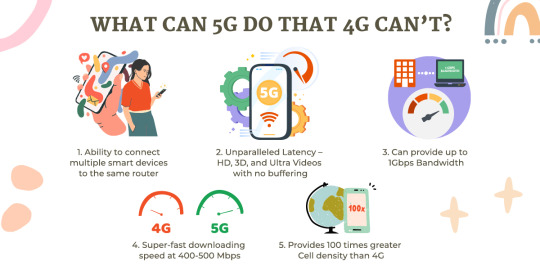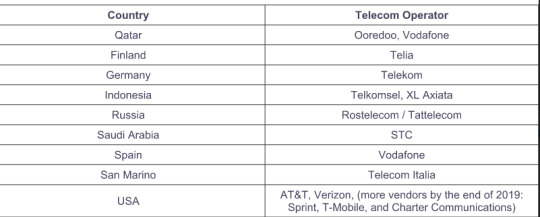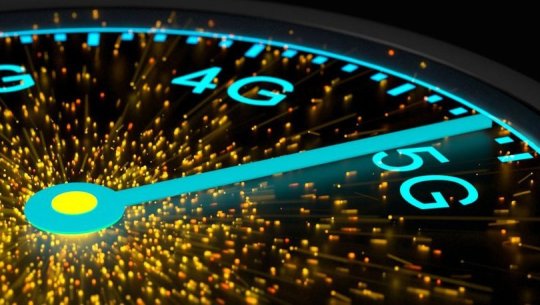#5gvs4g
Text
5G better than 4G? If so, why?
#5G $4G #phones #networks
1 note
·
View note
Text
youtube
Welcome to our in-depth comparison video between the Realme 11 5G and Realme 11 4G! Get ready to delve into the world of next-gen connectivity as we break down all the key differences and similarities between these two impressive smartphones.
With 5G technology rapidly gaining ground, the Realme 11 5G shines as a true powerhouse, delivering unparalleled internet speeds and flawlessly smooth browsing. Meanwhile, the Realme 11 4G offers exceptional performance and features that have made it a fan favorite.
In this video, we will explore various aspects, starting from the design and build quality that separates these two devices. We'll dive into their display technologies, highlighting the advantages each offers for immersive viewing experiences.
Moving on, we'll analyze the processing power and overall performance of both phones, putting them through rigorous tests and benchmarks to see how they handle multitasking, gaming, and everyday usage.
Camera enthusiasts, you won't be disappointed! We'll provide an in-depth analysis of the camera systems on the Realme 11 5G and Realme 11 4G, showcasing their capabilities, such as stunning capturing modes, low-light performance, and advanced imaging algorithms.
Next, we'll explore the software and user interface of these devices, discussing the intuitive features and customization options they offer. Additionally, we will delve into the battery life, charging speeds, and the storage options available in each phone.
To wrap it all up, we'll weigh the pros and cons, guiding you towards making an informed decision based on your specific needs and preferences.
If you're searching for a future-proof device with remarkable 5G capabilities or a budget-friendly option with outstanding performance, this video is a must-watch!
Make sure to subscribe to our channel and hit the notification bell to stay updated on all the latest tech comparisons, reviews, and more! Leave your thoughts and questions in the comments section below; we always love to hear from our viewers!
#Realme11#NextGenConnectivity#SmartphoneComparison#MobileTech#Flagshipkiller#TechReview#5Gvs4G#PhoneComparison#HighSpeedInternet#Connectivity#TechGadgets#Technology#Android#Smartphone#MobilePhone#VideoReview#GamingPerformance#CameraComparison#NewPhone#Youtube
0 notes
Link
Explore the basic differences between 5G and 4G technologies in this informative article. Learn about the benefits of speed, latency, and impact on the industry.
0 notes
Text
5G Smartphones are set to revolutionize Healthcare & Education

In the past few years, we have seen how 4G technology took mobile internet to the masses. All across India, even in rural areas, people started using the internet on their mobile phones. If 4G delivered better mobile internet experience, 5G will take the game to an altogether new level.
The launch of 5G technology will transform the lives and economy in a manner 3G and 4G could never do. Even though 5G is going to have a positive impact on all the industries, the impact on healthcare and education sectors is going to be particularly noticeable.
Let's take a deeper look into what 5G will mean for healthcare and education sectors.
Whenever we are ill, we usually prefer going to a hospital or a clinic physically. But for people living in remote areas with limited access to healthcare, it poses a huge challenge because they have to travel to nearby cities to go to a hospital.
With the advent of 5G cellular technology, people will be able to connect with their doctors from their homes' comfort through a short video call. Usually, MRIs and other diagnostic-related images are huge files, and therefore, they have to be submitted manually. It makes medical procedures lengthy and painstaking. 5G technology will help by making it possible to transfer huge medical files efficiently.
Since 5G offers lower latency and faster speed, it will be possible for healthcare providers to remotely monitor a considerably higher number of patients than possible currently.
Hospitals and doctors will also be able to receive data in real-time, which will allow them to treat their patients more efficiently. Simply put, healthcare systems will be able to enhance the quality of care and patient experience with the help of 5G.
On the same lines, even the education sector will get a boost thanks to 5G. All across India, universities and colleges are searching for new and innovative ways to provide an improved learning experience to their students.
The introduction of 5G will make it possible for teachers to connect with their students remotely. 5G technology will also allow more devices to be connected with the network. It will be useful for schools and colleges, which use multiple devices for SMART classes. They will be able to download videos faster without facing buffering issues.
5G will help deliver a seamless experience for online classes. As a result, teachers and students will be able to connect remotely. They won't have to spend time travelling. The students will be able to access lessons on smartphones, which they are doing with 4G, but 5G will provide them with a much-improved experience.
After COVID-19, people have become comfortable with the 'new normal'. They are taking doctor consultations and classes online with video calls. But, their experience has not been satisfactory. This is where 5G will help by offering a seamless experience in delivering and accessing healthcare and education services.
That's why many manufacturers have started launching 5G smartphones. OPPO will launch Reno5 Pro 5G on January 18. The all-new OPPO phone is going to deliver a great experience to the users.
The mobile phone is equipped with 5G modem that will provide lower latency and high-speed internet connectivity. The smartphone will offer features like 64MP quad-camera, MTK chipset 1000 plus, fast charging, 32MP selfie camera, borderless screen, AMOLED display, making it a perfect handset for your online classes and video conferences.
0 notes
Text
5G vs 4G
5G or 5th generation of internet determines the high-speed mobile connectivity. The URLLC (Ultra-Reliable) and Low Latency Communication) within 5G facilitate the increasing requirement for high-speed communication by connected things and smart cities. 5G uses millimeter waves to offers speeds up to 20 gigabits per seconds, which is much higher than the current 4G system. However, according to the country level infrastructure the speed and operational bandwidth of 5G is expected to stand between 1.4 Gb/second to 3.5 Gb/second.
Currently, a few cities in the US, Western Europe are adopting 5G services. However, Asian and Middle Eastern countries namely, China, Japan, Indonesia, Qatar, UAE, India are expected to become leading adopters of 5G by 2020.
5G technology hotspots globally:

Western European and the US are expected to become the primary adopters of 5g for commercial purposes.
European Union is more likely to become the leading adopter of 5G considering the government push for enabling 5G by 2020; followed by the US, with a greater number of vendors announced to launch 5G by H1 2019.
5G vs 4G:
Despite the high speed of connectivity, 5G will result in a high cost of ownership for enterprises and telecom companies. The current enterprise communication is based on MPLS/3G/4G networks, which is currently undergoing a heavy disruption due to the push for 5G.
the smartphone manufacturers have already started producing 5G supporting mobile devices, which will immediately disrupt smart cities and smart transportation markets.
The range of 5G is way lesser than 4G, which will limit its initial implementations only in Smart Cities and Enterprise connectivity
Making enterprises 5G ready by upgrading the enterprise networks can be a lucrative opportunity however, it is a cost-intensive effort, also 5G is currently at pilot state in a couple of countries globally. So, adopting 4G connectivity along with centralized bandwidth management would be a cost-effective move in 2019.
5G will improve mobile to edge connectivity by transforming local devices as servers, which will partially address enterprise server needs but will open up the market for device connectivity and security.
Growing number of smart cities results in an increasing volume of data from both consumers and governments; in order to enable high speed internet connectivity in the smart cities for enabling connected transportation, governance and others, smart city infrastructure has to be upgraded. Over 75% of the 126 smart cities have announced to adopt hardware infrastructure to support high-speed internet by 2021. Hence, hardware infrastructure and software-defined network vendors are expected to gain huge growth in the next 2 to 3 years.
0 notes
Text
5G Bize Neler Getirecek ?

5G Bize Neler Getirecek ?
Hız ve kapasitede çok yüksek artışlar vaat ediyor. İndirme hızlarının saniyede 10 ila 50 Gigabit e kadar çıkacağı öngörülüyor. Haberin devamı lodose.com.tr
#3g #4g #5g #Newtechnology #tech #technology #5gvs4g #hrvatskitelekom #5gtest #5gspeed #5gspeedtest #vidi25tribes #vidination #croatia #5gcroatia #speed #speedtest
Read the full article
0 notes
Video
youtube
Downloading pubg Game using 5G Internet! WiFi #5gvs4g #5gnetworkinindia
0 notes